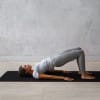A Beginner’s Guide To Running: Advantage, Process & Effects
Our beginner’s guide to running for overall health and fitness is full of valuable information for staying safe, reducing injuries, optimizing your nutrition, and much more. You probably won’t need all of this information your first time out, but you’ll definitely want to revisit it as you progress in your running journey.
The Benefits of Running for Overall Health and Fitness
You don’t have to be a marathon runner to enjoy the physical, mental, and social benefits of running. Casual runners of all ages enjoy this sport because it’s one of the best ways to burn calories and support cardiovascular health.
It’s also an excellent way to lose weight, increase your metabolism, relieve stress, and boost your mood. Running regularly also lowers cholesterol levels, reduces your risk of osteoporosis, and increases your energy levels.
Types of Running
While running itself doesn’t require much explanation, there are several different types of running to experiment with. While some runners stick to one type, others like to switch things up regularly, depending on the weather, how intense they want their workout to be, and a variety of other factors.
- Treadmill running: Running on a treadmill is a great option when the weather isn’t cooperating. It also tends to be gentler on your joints and a bit easier than running on the road or on a track. Treadmills also allow you to change the incline, resistance, and pace easily to add variety to your workout.
- Road running: Many people run on paved roads, sidewalks, or running paths at local parks. Road running is convenient because you can do it anywhere, even when you’re traveling. It’s also the easiest way to get started- just throw on some running shoes, step out your front door, and off you go.
- Trail running: If you enjoy being in nature, trail running is for you. This type of running is a bit more advanced because it takes place on hiking trails with varying terrain.
- Track running: Track running is great for those who enjoy speed running, sprints, and hurdles. Runners who are training for long-distance races can also benefit from running on a track.
- Beach running: Running in sand provides a totally different type of workout than running on hard surfaces. Enjoying the beautiful scenery as you run is an added bonus.
How to Start a Running Regimen
If you are new to running or you haven’t run in a while, you will want to start out slowly and build up the length and intensity of your runs gradually to avoid injury. Here are the steps you’ll need to take when starting a running program.
This is especially important if you’ve been sedentary, take medication, or have a health condition.
-
Invest in a good pair of running shoes
The shoes you choose should be appropriate for the type of running you’ll be doing.
-
Invest in good running attire
Investing in good quality, skin-friendly socks, and lightweight, fast-drying running clothes is as important as shoes. Pick your activewear in bright colors for good visibility. If you’ll be running outdoors in cold weather, choose items that can be layered and added or removed as needed. A hat and gloves are ideal for preventing heat loss.
-
Prioritize running safety
Always do a dynamic warm-up before you start your run and take it easy for the first 5-10 minutes to reduce the risk of injury. If you’re running on the road, run against traffic. Be sure to carry your ID and cell phone in case of an emergency. And be sure someone you trust knows where you’ll be running and when to expect you back.
-
Use the walk/run method to get started
This is the easiest way to build up your endurance and reduce the stress in your joints. Start by walking for one minute, then run for one minute, slowly increasing the length of your running intervals over time. As your body becomes used to running, you’ll eventually be able to make the switch to running for the entire workout.
-
Consistency, not speed or distance should be the goal
You want your runs to be challenging, but not so hard that you can’t do them consistently. If you can’t speak in full sentences throughout your entire run, you’re working too hard and you need to reduce the speed, intensity, or distance of your run.
-
Practice proper running form
That means keeping your posture straight, not hunched over. Your shoulders should be level and relaxed, your head lifted, and your back long and tall.
If you are wanting to know about Running Nutrition for Beginners, just hang on as in part 2 of this blog post we are going to talk about it. Till then stay safe while running.

























